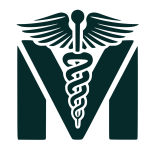Treatment
Brain Cancer
What is Brain Cancer?
Brain cancer refers to the growth of abnormal cells in the brain or its surrounding structures (like the meninges, pituitary gland, or pineal gland). It can be primary (originating in the brain) or secondary/metastatic (spread from cancer elsewhere in the body).
- Types:
- Primary Brain Tumors:Classified by the cells they start from. Common types include:
- Gliomas: (Most common primary malignant tumors) Arise from glial cells. Subtypes:
- Glioblastoma (GBM): Aggressive, fast-growing (Grade 4 astrocytoma).
- Astrocytomas: Grades 1-4.
- Oligodendrogliomas.
- Ependymomas.
- Meningiomas: Usually benign (non-cancerous), slow-growing tumors from the meninges (brain covering).
- Pituitary Adenomas: Usually benign tumors of the pituitary gland.
- Medulloblastomas: Malignant, most common in children (posterior fossa).
- Schwannomas: Usually benign (e.g., Acoustic Neuroma/Vestibular Schwannoma).
- Gliomas: (Most common primary malignant tumors) Arise from glial cells. Subtypes:
- Secondary (Metastatic) Brain Tumors:More common than primary brain tumors. Cancers that frequently spread to the brain include lung, breast, melanoma, kidney, and colon cancer.
- Symptoms: Vary greatly depending on the tumor’s location, size, and growth rate.
- General Symptoms: New or worsening headaches (often worse in the morning or with activity), nausea/vomiting (especially in the morning), seizures (new onset in an adult is a red flag), fatigue, drowsiness.
- Focal Symptoms (Based on Location):
- Frontal Lobe: Personality/behavior changes, difficulty planning/judgment, weakness on one side.
- Temporal Lobe: Speech difficulties, memory problems, seizures with strange sensations.
- Parietal Lobe: Sensory changes, spatial awareness problems, difficulty with reading/writing/calculations.
- Occipital Lobe: Vision problems.
- Cerebellum: Balance/coordination problems, dizziness.
- Brainstem: Swallowing/speech difficulties, facial numbness/weakness, double vision.
- Pituitary: Hormonal imbalances (e.g., unexplained lactation, growth changes, Cushing’s syndrome).
- Causes & Risk Factors:
- The exact cause of most primary brain cancers is unknown.
- Known Risk Factors:
- Age: Risk increases with age (though certain types, like medulloblastoma, are more common in children).
- Ionizing Radiation Exposure: (e.g., previous radiation therapy to the head).
- Family History: Rare inherited syndromes (e.g., Neurofibromatosis type 1 & 2, Li-Fraumeni syndrome, Turcot syndrome, von Hippel-Lindau disease) increase risk.
- Compromised Immune System: (e.g., people with AIDS or immunosuppression after organ transplant have a slightly higher risk of lymphomas in the brain).
- Exposure to Certain Chemicals: (Evidence is limited and often occupational).
- Diagnosis:
- Neurological Exam: Tests vision, hearing, balance, coordination, strength, sensation, and reflexes.
- Imaging:
- MRI (Magnetic Resonance Imaging): Gold standard, provides detailed pictures. Often done with contrast dye.
- CT (Computed Tomography) Scan: Used if an MRI isn’t available or to look for bleeding/bone involvement.
- Biopsy/Surgery: Usually needed to determine the exact type and grade of tumor. It can be done via stereotactic needle biopsy or during open surgery (craniotomy) to remove as much tumor as possible.
- Lumbar Puncture (Spinal Tap): Sometimes used to check for cancer cells in cerebrospinal fluid (CSF), especially for certain tumors like medulloblastoma or lymphoma.
- Molecular/Genetic Testing: Increasingly important on tumor tissue to guide prognosis and treatment.
- Treatment: Depends heavily on the tumor type, grade, location, size, molecular features, and the patient’s age/overall health.
- Surgery: The Goal is maximal safe removal without damaging critical brain function. Sometimes complete removal isn’t possible.
- Radiation Therapy: Uses high-energy beams to kill cancer cells. Techniques like IMRT, SRS (stereotactic radiosurgery), and proton therapy target the tumor precisely.
- Chemotherapy: Drugs to kill cancer cells (oral or IV). Common drugs include temozolomide, PCV (procarbazine, lomustine, vincristine). Sometimes delivered directly into the tumor cavity (Gliadel wafers) or CSF.
- Targeted Therapy: Drugs targeting specific molecules/gene mutations in cancer cells (e.g., Bevacizumab for GBM, Dabrafenib/Trametinib for BRAF-mutant tumors).
- Tumor Treating Fields (TTFields): Wearable device (Optune) delivering low-intensity electric fields to disrupt cancer cell division, used for GBM.
- Immunotherapy: Still largely experimental for brain cancer, but clinical trials are ongoing (e.g., checkpoint inhibitors, CAR-T cell therapy).
- Supportive (Palliative) Care: Essential at all stages to manage symptoms (pain, seizures, swelling), side effects of treatment, and improve quality of life. Includes steroids (to reduce swelling), anti-seizure meds, pain meds, and physical/occupational/speech therapy.
- Prognosis:
- Varies enormously. Benign tumors (like many meningiomas) can often be cured with surgery. Aggressive malignant tumors (like GBM) have a poor prognosis despite treatment.
- Key factors influencing prognosis include tumor type/grade, location, size, molecular markers (like IDH mutation, MGMT promoter methylation status), extent of surgical removal, age, and overall health.
- Ongoing research is constantly improving understanding and treatment options.


